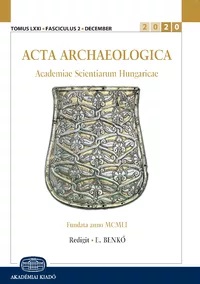Burials of elite children in the Italian peninsula between the second half of the sixth and the end of the seventh centuries AD. Strategies of funerary distinction and funerary goods in the female realm
Burials of elite children in the Italian peninsula between the second half of the sixth and the end of the seventh centuries AD. Strategies of funerary distinction and funerary goods in the female realm
Author(s): Martina DalceggioSubject(s): Archaeology
Published by: Akadémiai Kiadó
Keywords: elite girls; child graves; Lombard; Byzantine; church
Summary/Abstract: The investigation of elite girls' burials in the Italian peninsula is part of a broader doctoral research project that aims to outline the territorial distribution of Early Mediaeval elite women and girls in the Italian peninsula and analyse the strategies of their funerary self-representation in a short but significant period. Altogether 24 elite girls' burials have been identified in Roman-Byzantine and Lombard territories between the second half of the sixth and the end of the seventh centuries AD. Our analysis focuses on the most significant elements: find context, burial topography, the quality of the funerary goods, and funerary construction. In Byzantine territories, elite children were given ad sanctos burial, but with significant differences in purchasing power between the cities and the countryside. The urban elite was willing to spend huge amounts of money for the burial of their girls inside churches, while the same level of wealth has not been detected in the countryside so far. On the other hand, in the Lombard Kingdom and the Duchies of Spoleto and Benevento, funerals given to elite Lombard girls did not differ from those of older age groups and involved handing over important family brooches between generations. By the mid-seventh century AD, elite girl's burials were frequently near or inside churches and rural oratories, contributing in a significant way to a gradual narrowing of the cultural gap between Lombards and the local population.
Journal: Acta Archaeologica Academiae Scientiarum Hungaricae
- Issue Year: 73/2022
- Issue No: 2
- Page Range: 169-190
- Page Count: 22
- Language: English
- Content File-PDF

